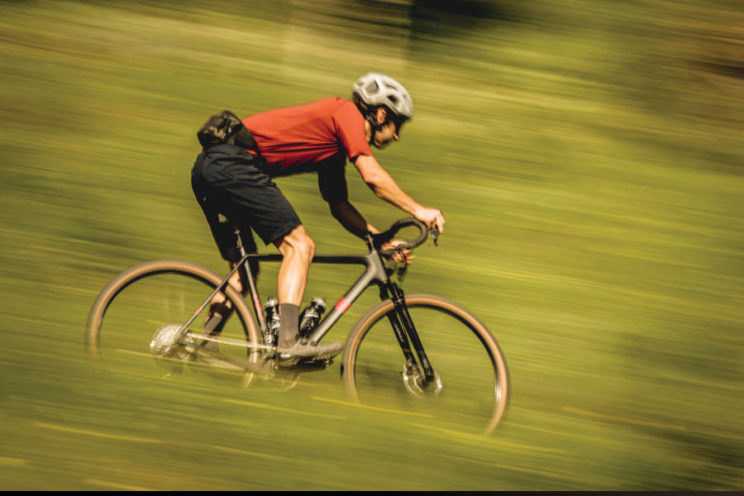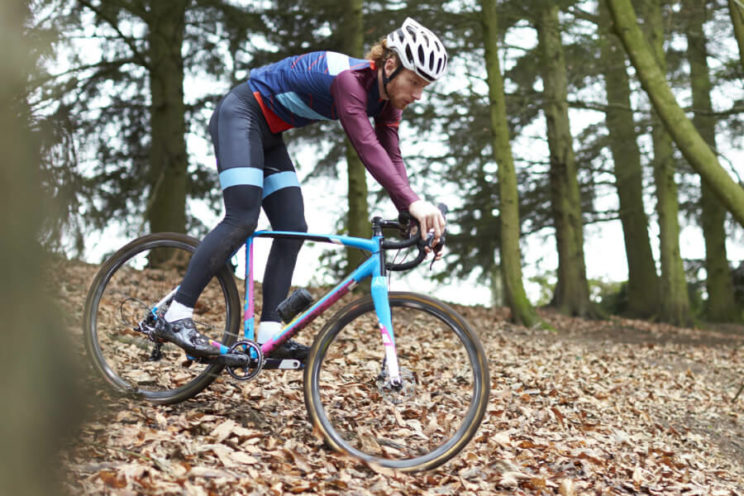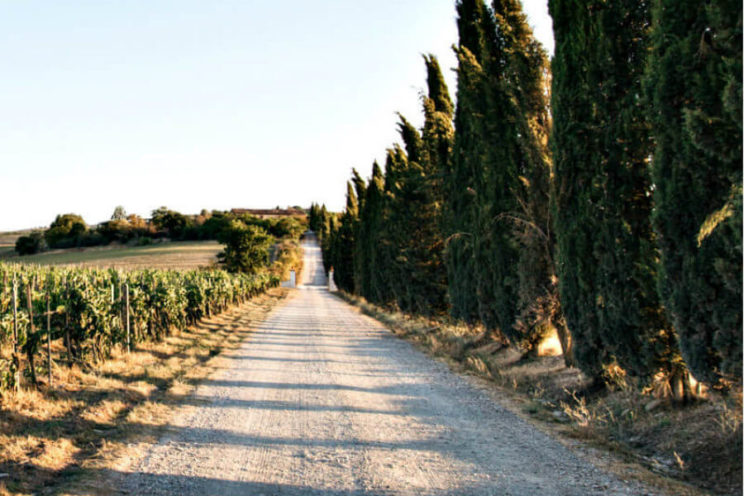👉 You are interested. Enter here to consult all Gravel bicycles We have in Tuvalum. Revised and with the quality guarantee endorsed by the Tuvalum certified label.
But first of all. The geometry of a bicycle is the mathematical basis that predicts the behavior of the picture for a specific piloting type. Any change, however small, can change the character of the bicycle. Altering the angles of the tubes in a degree, for example, can substantially modify the cyclist's position on the bicycle, or change the behavior of direction and interaction with the terrain.
 Under the same march conditions, there is no geometry that adjusts to 100% in all cases and for all cyclists. Simply, there are geometries that prioritize different aspects of the performance of the painting. In general, Serlal bicycles are designed with a geometry that places the cyclist in a body position more upright than a road bike. There are always exceptions; For example, in the geometries of the Grave Competition Models this aspect is not so obvious. But, in general, they have a REACH shorter and Stack higher than most road bicycles. In this sense, there are road bicycles endurance that have a less aggressive position, so certain similarities can be detected. As a general rule, in any case, road bikes have a short wheelbase, more pronounced angles and a Cockpit lower for agile driving quality and dynamic management. [IRP Posts = "3919" Name = "What are the Stack and Reach of a bicycle and why are important"] some of the most decisive measures in a bicycle box are the angle of the armchair, the steering angle, the steering angle, the Pedalier and the wheelbase. In the picture of a serious bicycle, the interaction of these angles and measures is the form of engineers to get solvent on off -road surfaces. Gravel bicycles are conceived to roll for very varied land: the same as asphalt, than by track, than by roads and trails. The challenge, therefore, is to find a geometry that behaves dignity in all lands, but does not commit in excess with a specific terrain.
Under the same march conditions, there is no geometry that adjusts to 100% in all cases and for all cyclists. Simply, there are geometries that prioritize different aspects of the performance of the painting. In general, Serlal bicycles are designed with a geometry that places the cyclist in a body position more upright than a road bike. There are always exceptions; For example, in the geometries of the Grave Competition Models this aspect is not so obvious. But, in general, they have a REACH shorter and Stack higher than most road bicycles. In this sense, there are road bicycles endurance that have a less aggressive position, so certain similarities can be detected. As a general rule, in any case, road bikes have a short wheelbase, more pronounced angles and a Cockpit lower for agile driving quality and dynamic management. [IRP Posts = "3919" Name = "What are the Stack and Reach of a bicycle and why are important"] some of the most decisive measures in a bicycle box are the angle of the armchair, the steering angle, the steering angle, the Pedalier and the wheelbase. In the picture of a serious bicycle, the interaction of these angles and measures is the form of engineers to get solvent on off -road surfaces. Gravel bicycles are conceived to roll for very varied land: the same as asphalt, than by track, than by roads and trails. The challenge, therefore, is to find a geometry that behaves dignity in all lands, but does not commit in excess with a specific terrain.  Moving the geometry of a road bike to a serious one is not a good business, since the conditions are different. For example, road bicycles are shorter, which has a simple explanation: cyclists need to obtain any aerodynamic or positional advantage within a group. And that implies following the wheel of other cyclists very closely. The shortest bicycles are more nervous to any cyclist's action or change in land conditions. Therefore, it is not the ideal geometry for a serious bicycle. Let us start from the fact that, on many occasions, the state of the land is unpredictable. The geometry of a serious bicycle is designed so that the cyclist's weight is better distributed for driving in technical terrain, so that more body weight is placed on the rear wheel, compared to road bikes.
Moving the geometry of a road bike to a serious one is not a good business, since the conditions are different. For example, road bicycles are shorter, which has a simple explanation: cyclists need to obtain any aerodynamic or positional advantage within a group. And that implies following the wheel of other cyclists very closely. The shortest bicycles are more nervous to any cyclist's action or change in land conditions. Therefore, it is not the ideal geometry for a serious bicycle. Let us start from the fact that, on many occasions, the state of the land is unpredictable. The geometry of a serious bicycle is designed so that the cyclist's weight is better distributed for driving in technical terrain, so that more body weight is placed on the rear wheel, compared to road bikes.
The geometry of a serious bicycle is designed so that the cyclist's weight is better distributed for driving in technical terrain.Let's give an example. To safely enjoy a serious bike of a technical descent, stability is fundamental. And this is where geometry plays a leading role. A bike with a greater axes will always be more stable because it is longer. The more the wheels have each other, the less it will influence one over another. On a serious bicycle, you will notice that a blow of the terrain on the front wheel has less impact on the direction than the one you receive on a road bike. And this is, above all, to geometry.
 A fundamental principle of the geometry of a serious bike is to avoid, as far as possible, that the terrain diverts the bicycle of its trajectory. The longest wheelbase (like pods) reduces that feeling of nervousness When you circulate on an irregular surface at high speed. The pedalier height also influences, lower than a road model, which favors stability. In short, pilot quality is softer. Since a serious bicycle is longer, the amount of chassis material, obviously, is greater than on any road bike, whatever size. If this material is conveniently to optimize the absorption of vibrations, this larger structure will influence a greater convenience of driving.
A fundamental principle of the geometry of a serious bike is to avoid, as far as possible, that the terrain diverts the bicycle of its trajectory. The longest wheelbase (like pods) reduces that feeling of nervousness When you circulate on an irregular surface at high speed. The pedalier height also influences, lower than a road model, which favors stability. In short, pilot quality is softer. Since a serious bicycle is longer, the amount of chassis material, obviously, is greater than on any road bike, whatever size. If this material is conveniently to optimize the absorption of vibrations, this larger structure will influence a greater convenience of driving.
The chassis of a serious bike has more material than one of the road, which brings more stability and comfort.The steering angle is the other measure that defines and differentiates a grave box from a high -performance road bike box. The more open the direction angle, the response to the handlebar's turn is more reactive, faster and, even more violent sometimes. Since grave bikes have a closed angle, the answer is just the opposite: a more lazy direction. But why a bicycle with a slower response capacity? It has its explanation. In a serious route, there is always the possibility of which front wheel is hooked in one of the obstacles of the terrain. When this occurs, cyclist's intervention is required to correct the direction with the handlebar. The fact that a serious bike reacts more slowly offers a certain margin of maneuver to the cyclist. Otherwise, I might not give time to avoid a possible fall. [Captation id = "Attachment_6507" Align = "Alignnone" Width = "744"]
 (Image: Dmitrii Vaccinium - UNSPLASH)[/caption] Serlal bicycles have a significantly closed steering angle than road bicycles, which decisively influences the management of the direction itself. Do you want another example? We could compare the geometry of two brand bicycles Specialized: The road model Roubaix And the GraveL model Diverge. The difference in the direction angle is significant: 73.5 degrees of the Roubaix compared to 71.75 degrees of the Diverge. A difference of 1.75 degrees that we could qualify as remarkable. In fact, if we were talking about MTB, this difference would place these bikes in different modalities. Let's say the difference between a mountain bike of trail And one of enduro is the same that exists between one of road and one of grave. To get an idea.
(Image: Dmitrii Vaccinium - UNSPLASH)[/caption] Serlal bicycles have a significantly closed steering angle than road bicycles, which decisively influences the management of the direction itself. Do you want another example? We could compare the geometry of two brand bicycles Specialized: The road model Roubaix And the GraveL model Diverge. The difference in the direction angle is significant: 73.5 degrees of the Roubaix compared to 71.75 degrees of the Diverge. A difference of 1.75 degrees that we could qualify as remarkable. In fact, if we were talking about MTB, this difference would place these bikes in different modalities. Let's say the difference between a mountain bike of trail And one of enduro is the same that exists between one of road and one of grave. To get an idea.
The difference between a mountain bike of trail And one of enduro is the same that exists between one of road and one of grave.Continuing with the example, the Specialized Roubaix It has a wheelbase of 988 mm in size 54, by the 1,032 of the Specialized Diverge. Short powers and handlebars with a Flare Wider also make the difference between a serious and a road model. A modest power gives the serle more sliced cyclist through the handlebar, so that the front wheel can better control when it rolls with rugged ground. This geometry also explains the ease of installing travel bags. You will never carry these types of elements in the handlebar or in the box of a road bike. In one of grave it is perfectly viable.
 In this case, load weight in the handlebar or in the painting alters the center of gravity of a serious bicycle. To counteract it, the greatest width of the handlebar, together with a short power, allows stabilizing the inertia of the direction. We have already pointed it before. In summary. For not initiated, a road and serious bike may seem very similar things. However, geometry places them in very different planes. The direction angle, the width of the handlebar or the length of the power are capital elements, although you should not take them in isolation. Other variables such as the displacement of the fork and the distribution of weight are equally important in the behavior of your machine. [OPTIN-MONSTER SLUG = "QAPJFYHV5ZVT1ZR0IP1R" FOLLOWRULES = "TRUE"]
In this case, load weight in the handlebar or in the painting alters the center of gravity of a serious bicycle. To counteract it, the greatest width of the handlebar, together with a short power, allows stabilizing the inertia of the direction. We have already pointed it before. In summary. For not initiated, a road and serious bike may seem very similar things. However, geometry places them in very different planes. The direction angle, the width of the handlebar or the length of the power are capital elements, although you should not take them in isolation. Other variables such as the displacement of the fork and the distribution of weight are equally important in the behavior of your machine. [OPTIN-MONSTER SLUG = "QAPJFYHV5ZVT1ZR0IP1R" FOLLOWRULES = "TRUE"]





























